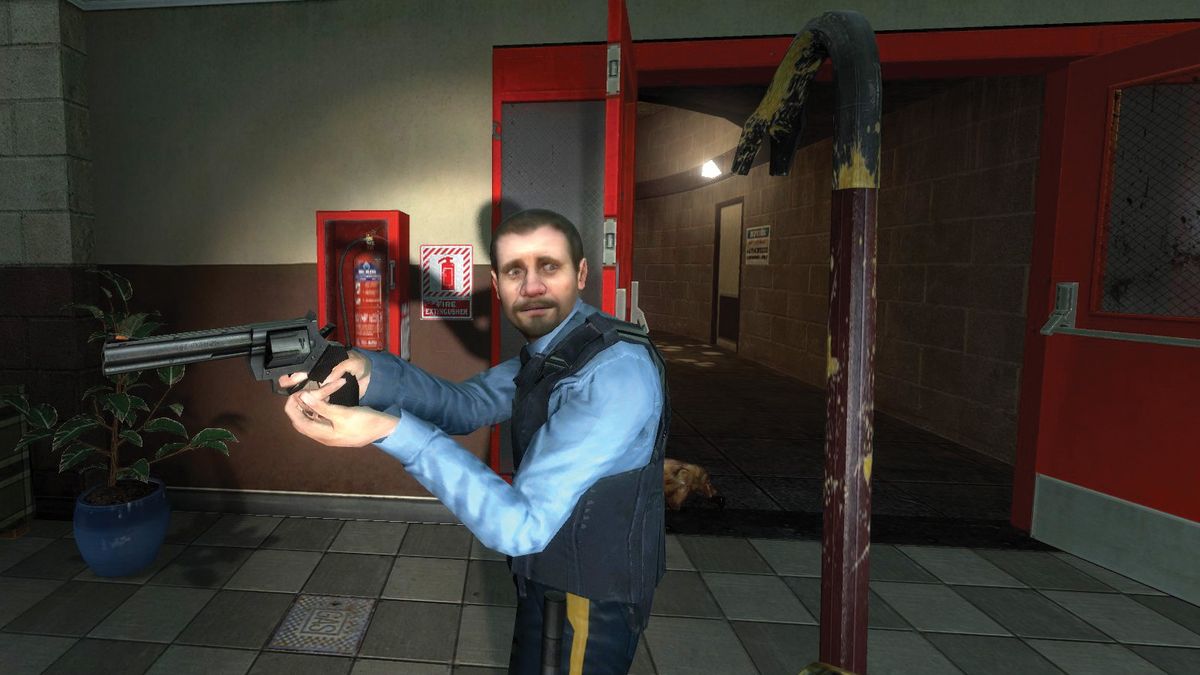What’s the half-life of Half-Life? By my estimation, it appears that we will cease to receive updates for one iteration or another of Valve’s iconic game roughly around the time when Chernobyl becomes inhabitable once again. The original game received a significant update last November, and now Black Mesa, the Valve-endorsed remake, has just released the “Necro patch,” the reasoning behind which remains somewhat unclear but is nonetheless quite exciting.
Previously referred to as a “big update” during its beta phase last month, the latest patch from Crowbar Collective seems quite substantial. It involves migrating the game to a more recent version of the DXVK renderer, enhancing performance, resolving crashes, and transitioning the game to utilize Steam Input for improved controller support, which has been notably upgraded overall.
Of particular interest is the enhancement in controller support. Despite the sacrilege involved, my initial attempt to play Black Mesa with a gamepad was disastrous. The game simply isn’t tailored for the slow aiming of a thumbstick, resulting in adversaries overwhelming you as you laboriously maneuver your weapons to target them. It’s a game inherently designed for the swift and precise aiming facilitated by a mouse.
However, Crowbar Collective has now “significantly revamped our previous auto-aim system.” This means that “Your crosshairs and aiming angles now gravitate towards enemies you encounter,” as opposed to the previous mechanism where bullets themselves were drawn to enemies without aiding your aim. In essence, it now functions similarly to auto-aim features in most other first-person shooters. Rest assured, this feature remains disabled in multiplayer mode.
These developments suggest that playing Black Mesa with a gamepad may now be a viable option. Moreover, the shift to Steam Input means that the game now offers “partial support” for various controllers, including Xbox, PlayStation, and Nintendo Switch controllers, with the added option of gyro aiming on the Steam Deck for those inclined towards such a feature.
The update is currently live, and you can access the complete patch notes below. With the beta release of the Necro patch, Crowbar Collective hinted at the potential arrival of a “more disruptive patch” (likely to impact saved progress) in the future. It seems that Half-Life is far from reaching its conclusion.
Black Mesa Necro Patch Notes
Key Updates
- Enhanced game performance (Vulkan, UI optimization, New Renderer/New Post Process Optimization)
- Rectified instances of game crashes during startup
- Resolved UI flickering and artifacting issues
- Fixed crashes occurring in the initial map of Interloper
- Enhanced controller support through Steam Input
- Addressed hitching when weapon decals are first applied to guns
- Weapon decals are now re-enabled by default
Rendering/Performance
- Transitioned the game to DXVK 2.3.1 (first launch option)
- Implemented performance improvements for the New Renderer and New Post-Process systems, particularly noticeable in water-intensive scenes
- Fixed moss shaders and direction control for both vertex lit shader and skin shader (for props with/without phong)
- Corrected halflambert/warp/specwarp related issues across all shaders
- Unlocked the highest graphics setting in the options menu
- Updated lighting quality settings in the New UI to reflect recent changes
- Monitors and refract views can now utilize the features of the New Renderer
- Added support for God Rays for sun and local lights
- Note: God Rays are intentionally disabled for monitors and reflection views
- Enhanced the blending quality of normal maps within 4-way blending
- SpotLight cookies now function irrespective of orientation, eliminating the need for a square cookie sprite sheet
- Black Mesa now requests high-performance power management on Windows to reduce performance-impacting power throttling
- Implemented the ability to dump environment variables (-dumpenvironment launch option) to assist in issue resolution
- Numerous miscellaneous graphics fixes
- Disabled CPU-based backface culling for Func_Brush models
- Deactivated CSM for viewmodels for secondary cameras
- Resolved flickering near Light Volume edges
- Rectified Xog artifacts with more cost-effective water rendering
Controller Support
- Users and the community can now create and share custom controller bindings
- With Steam Input integration, Black Mesa now offers partial support for the following devices:
- Xbox Controllers
- PlayStation Controllers
- Nintendo Switch Pro Controllers
- Enhanced Gyro support for Steam Deck!
User Interface
- Enhanced Game/UI rendering synchronization to ensure consistent UI presentation across all available modes
- Refined UI frame limiter logic to improve frame pacing smoothness, especially noticeable with vertical synchronization active
- Improved performance by optimizing texture lock implementation within the UI
- Addressed occasional UI rendering issues post-resolution adjustments
- Fixed alpha blending of UI with background map
- Added missing translators, including the 2012 mod translators (list of contributors for each language pending)
Bug Fixes
- Fixed crash in Interloper A
- Resolved Tau Canon crashing upon the owner’s demise
- Addressed potential hang-ups upon exiting the game
- Fixed reflection bug related to Xen fog at extreme angles
- Rectified transparency issues in fake water, now supporting New Renderer, New Post-Process, and CSM
- Eliminated outline artifacts in alpha-tested materials
- Fixed shader-related bug leading to lighting and shadow inconsistencies in view models
- Addressed Diffuse Warp issue when using more than eight slots in the atlas
- Resolved Workshop Client bug causing double initialization and potential crashes
Known Issues
- Alt-Tabbing while using Vulkan may occasionally crash the game
- Anti-virus software may flag the game as malicious despite being safe
- Minor UI overlap errors on certain ultra-wide monitors
- Localization required for some UI elements
